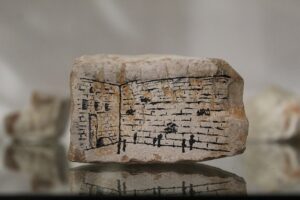A General Overview
A few days ago, someone wrote to me asking to explain the differences between the various Jewish groups, although we have several articles on this Blog that discuss this (here), the topic is so complex that questions always remain. So, I take this opportunity to talk a little about the subject, which will always help to understand the current context of the people of Israel. Sadly, the majority’s idea of this is influenced by antisemitism or an idealized vision thereof. Moreover, many speak about prophetic themes concerning Israel without having the slightest idea of Israel’s current reality, often saying completely irrelevant things.
Firstly, we must understand that the modern era (from 1789 to the present) began with a clear distinction between different Jewish groups, which did not have a territorial state to live as a nation. Until that moment and even before Christ (though fully from 135 AD), Jews adapted to living in each place they arrived as part of the diaspora, in order to fulfill those laws given by God outside the promised land. These diaspora groups developed over the centuries with different characteristics that still distinguish them today:
- Sephardim (who remained very small in Spain, but after the expulsion of 1492, they arrived in Northern and Eastern Europe, North Africa, Turkey, and the Americas).
- Ashkenazim (who settled in Eastern Europe, and upon the expulsion of Sephardim from Spain, maintained their differences with them).
- Mizrahim (who managed to stay in the promised land and received those who could return over the centuries).
- Yemenite Jews (although considered Mizrahi by many, this is the diaspora that settled mainly in Arab territories, primarily Yemen).
- Karaites (Jews who from approximately the 7th century reject rabbinic teachings embodied in the Talmud, primarily in the region of Iraq, but today they are found in many places inside and outside of Israel).
There are still other minorities, but ultimately they can be grouped within these groups.
After the massacres carried out by Hitler (known as the Holocaust), 90% of the crimes were against Sephardic diasporas, which completely changed the demographics of the diasporas. Therefore, today the majority group is Ashkenazi, and their customs seem to identify the entire world Jewish population (inside and outside Israel), when in reality it is a unique and special way that identifies only that group.
Until today, diasporas outside of Israel remain the majority (approximately 8 million) compared to those already in Israel (approximately 7 million, with a majority being Ashkenazi). This does not account for the millions who, simply due to the vicissitudes of being in the diaspora over the centuries, have lost their identity (the so-called anusim).
Today, the state of Israel through non-governmental organizations (NGOs) and encouraged by the general rabbinate, promotes a series of studies that include genealogies and DNA to help those interested in these last groups to start a process of return to their identity. This happens because in their most popular religious belief, the Messiah will come when Israel in its majority has returned to its faith, which includes the anusim. Politically, this is also advantageous because the more people identify with Israel, the more support they will have in a world and especially among antisemitic neighbors.
To be continued…
Author: Dr. Liber Aguiar

0 Comments